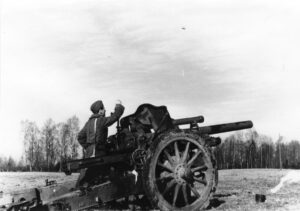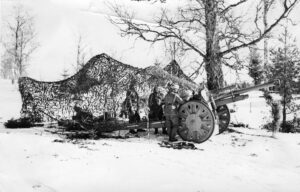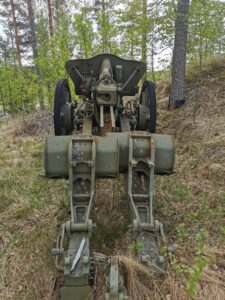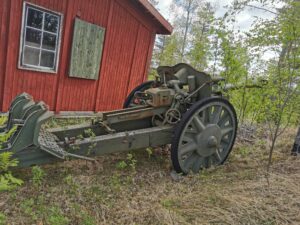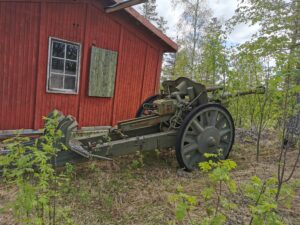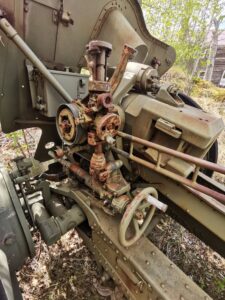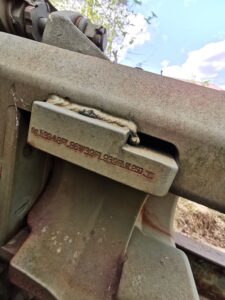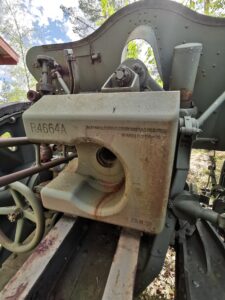10,5 cm Howitzer m/1939
10,5 CM HOWITZER M/39
The 10.5 cm Howitzer m/39 was a vital part of Sweden's defense during and after World War II. Thanks to its high rate of fire, long range, and ease of transport, it was a powerful weapon that soldiers appreciated. Although it was initially acquired as a quick solution, it became so successful that it was used for over 40 years.
When World War II broke out, Sweden faced an urgent need to modernize its weapons arsenal.
The main manufacturer of Swedish artillery pieces, Bofors, was overwhelmed with orders from both Swedish and foreign clients.
To quickly strengthen Sweden’s defense capabilities, the government decided to procure artillery from abroad. Among these, the 10.5 cm Haubits m/39, imported from Germany, became a key addition.
Although initially intended as a temporary solution, this howitzer proved to be a reliable asset for the Swedish defense and remained in service until 1982. Its long service life is a testament to how well it was integrated into Sweden's arsenal.
Construction and function
Caliber and ammunition
The 10.5 cm Haubits m/39 had a caliber of 105 mm, which was a common size for field artillery during the mid-20th century.
It fired explosive shells and other types of ammunition, suited for both striking ground targets and being used in indirect fire, where the targets were out of sight.
Barrel and recoil system
The howitzer could fire 6–8 rounds per minute, an impressive rate of fire for a weapon of this size. The recoil system was efficient, allowing the recoil force—up to 5,300 kg, depending on the angle of the barrel—to be managed effectively. The gun had a maximum range of nearly 11 km, making it well-suited for supporting long-range combat.
Sights and aiming
The 10.5 cm Haubits m/39 was equipped with a panoramic sight, allowing for precise targeting even at long distances. The elevation could be adjusted between -5° and +42° with the stabilizing legs extended, and the traverse range was almost 60°, offering nearly 30° of adjustment to either side.
Effective in combat
The howitzer was mounted on a two-wheeled carriage, making it easy to move. It could be towed behind a motor vehicle, enabling quick repositioning on the battlefield. This flexibility made it ideal for a variety of combat situations.
With a range of nearly 11 km and a rapid rate of fire, the 10.5 cm Haubits m/39 was a highly effective weapon. It was used for indirect fire, meaning it could hit targets that were hidden or out of sight. Its shells had powerful explosive force, capable of inflicting significant damage on enemy forces.
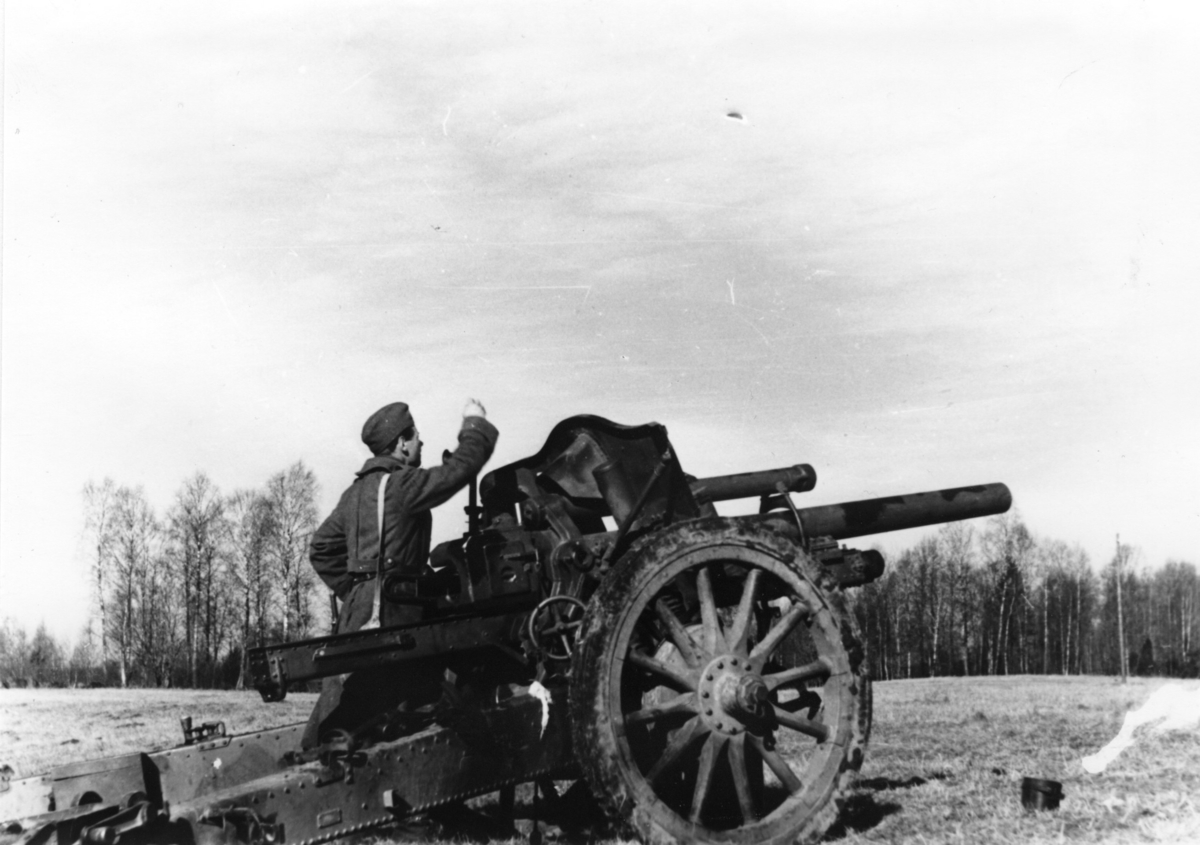
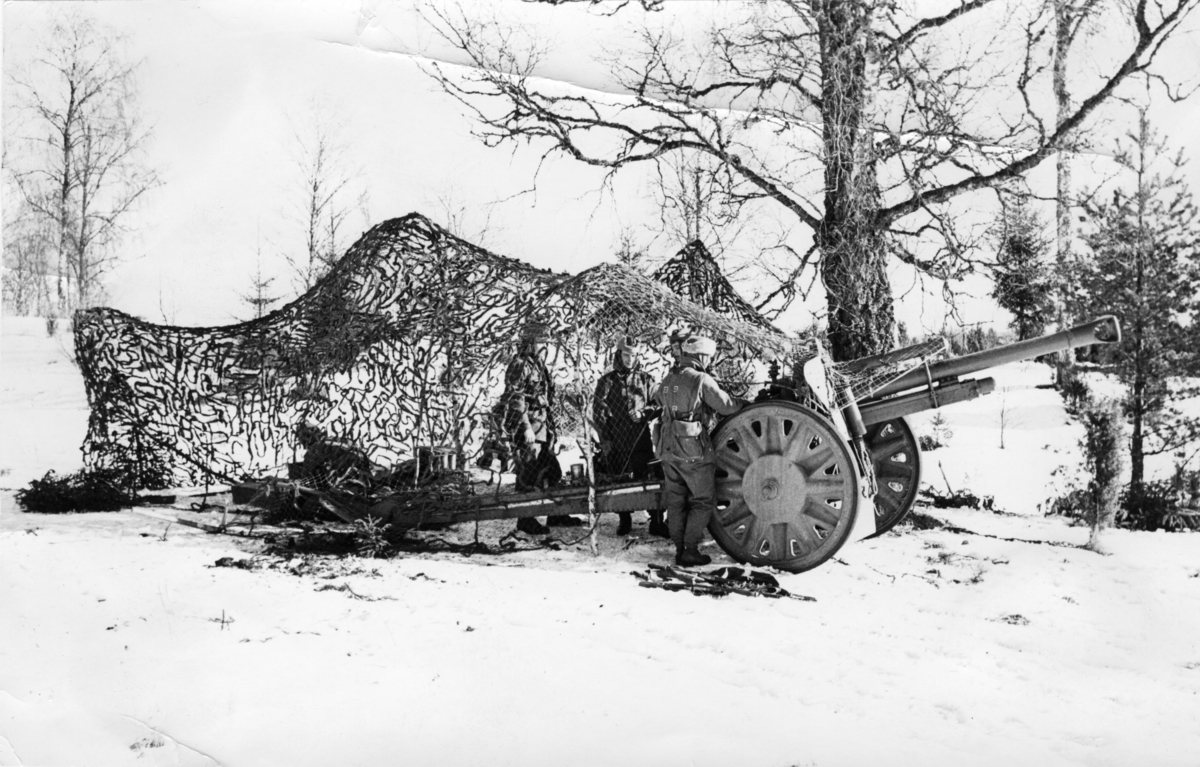
- 10,5 cm Howitzer m/1939. ©Public Domain, photographer Gösta Almqvist
- 10,5 cm Howitzer m/1939, winter camouflage. ©Public Domain, photographer unknown
- 10,5 cm Howitzer m/1939
- 10,5 cm Howitzer m/1939
- 10,5 cm Howitzer m/1939
- 10,5 Haubits m/1939. The greenery provides camouflage...
- 10,5 cm Howitzer m/1939
- 10,5 cm Howitzer m/1939
- 10,5 cm Howitzer m/1939
- 10,5 cm Howitzer m/1939
10,5 cm Haubits m/39
Registry number
R4664A
Weight (firing position)
Piece with equipment
1985 kg
Wheel load
928 kg
Recoiling system
550 kg
Barrel without breech
485 kg
Weight (travel position)
Piece with equipment
1985 kg
Recoil pressure
95 kg
Wheel load
945 kg
Crew
6
Caliber
105 mm
Recoil length at 0° elevation
Normal: 1150 mm
Maximum: 1180 mm
Traverse range within the carriage
With extended legs: 56°
With retracted legs: 6°
Elevation limits (with extended legs)
-5°, +42°
Elevation limits (with retracted legs)
-5°, +14°
Maximum range
10900 m
Recoil force
5300 kg
Wheel diameter
1300 mm
Ground clearance height
400 mm
